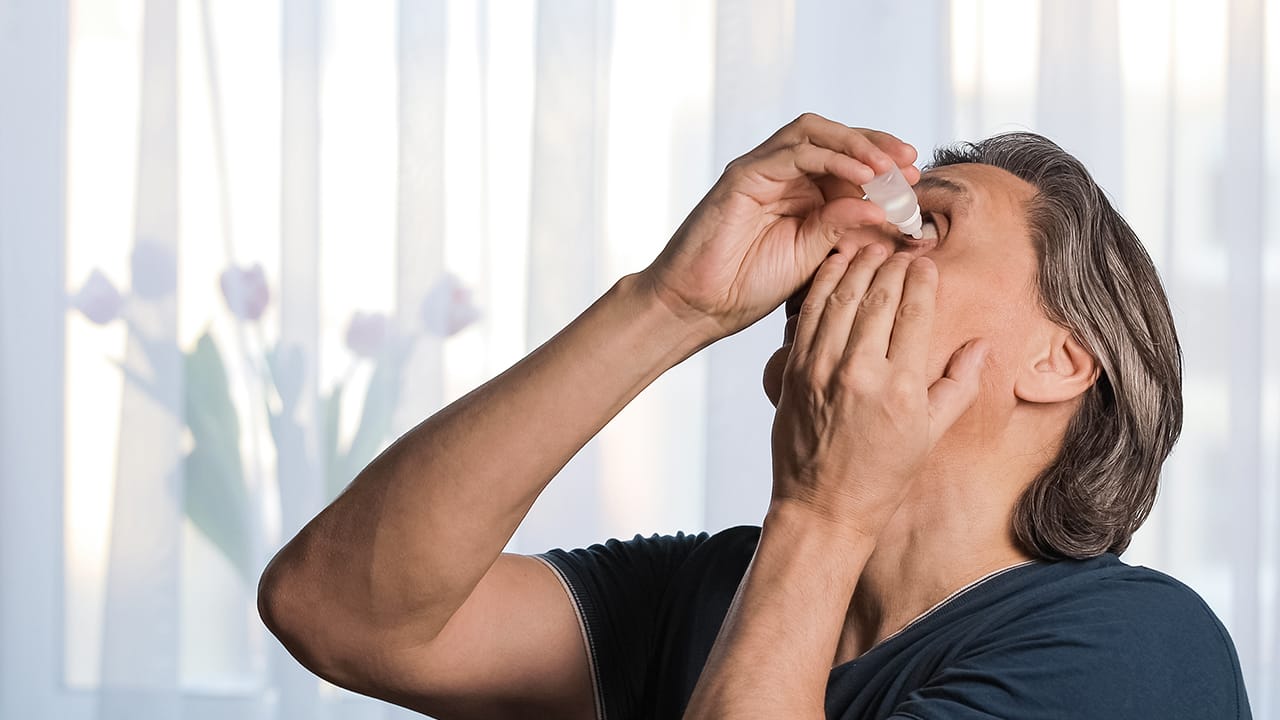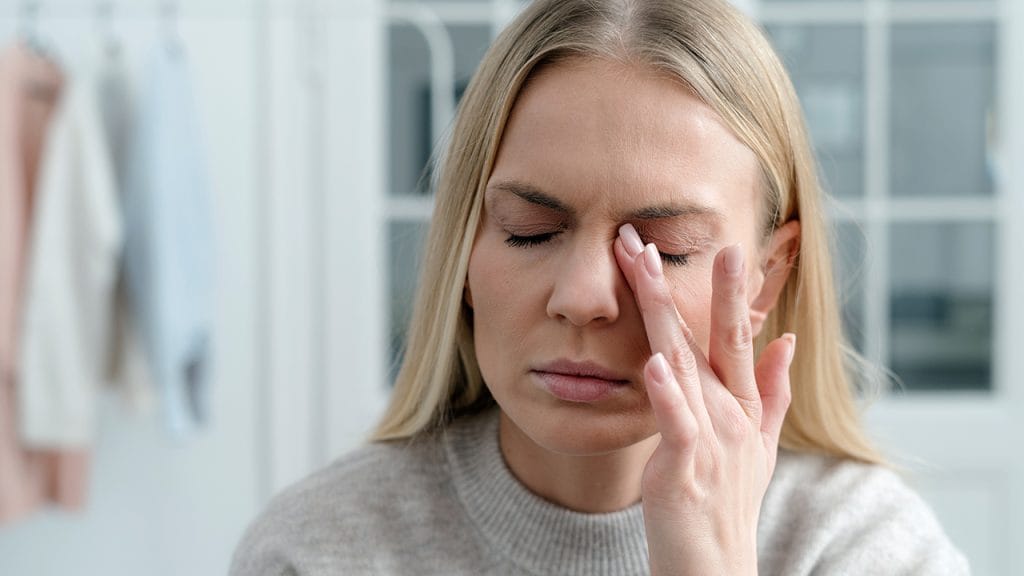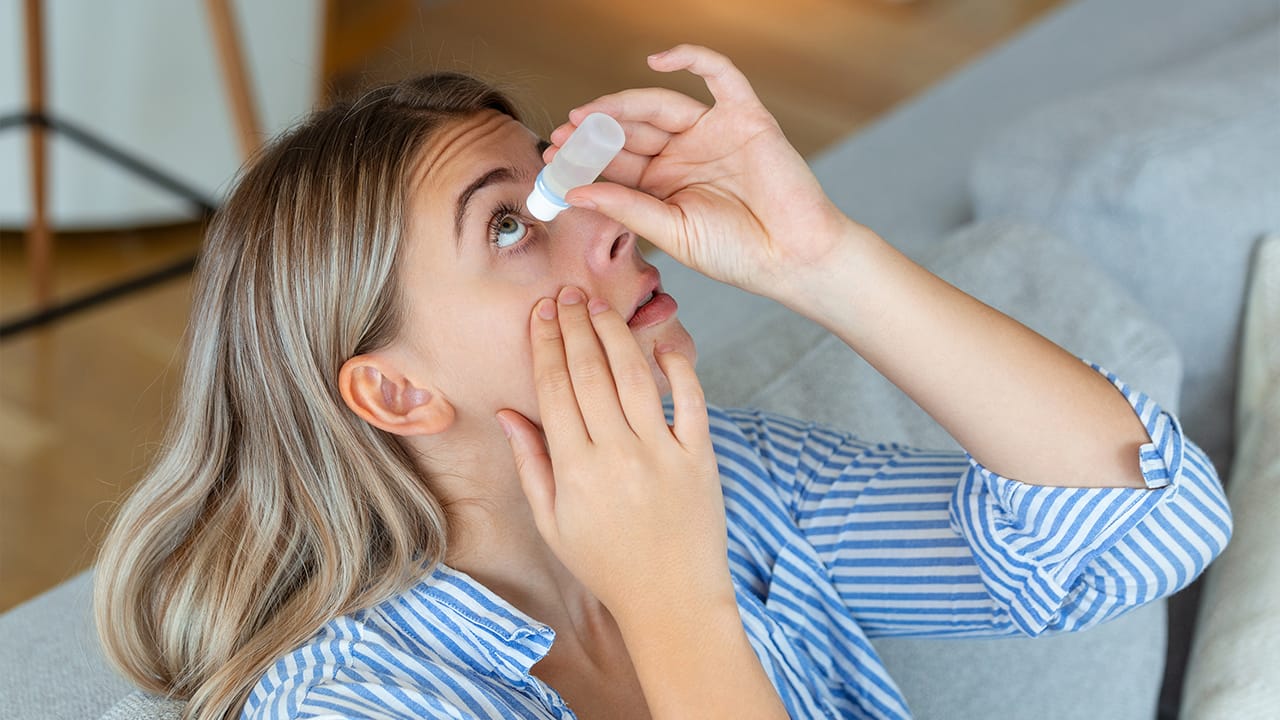Dry eyes are an eye problem that is encountered much more frequently today due to the increase in the use of digital screens, changes in environmental factors and some habits brought about by modern life. Dry eyes occur as a result of insufficiency or deterioration in the quality of tears that are responsible for keeping the surface of the eye moist. This situation causes the protective layer on the surface of the eye to weaken, leading to problems such as discomfort, stinging, burning and blurred vision. Although dry eyes may seem like a temporary discomfort, if left untreated, they can become chronic and cause serious eye diseases.
Causes of dry eyes include factors such as looking at digital screens for a long time, being in air-conditioned or windy environments, aging, some medications and vitamin A deficiency. Treatment methods for dry eyes include tear drops, lifestyle changes, medical and surgical approaches.
İçindekiler
ToggleWhat is Dry Eye?
Dry eyes occur when there is a disruption in the production or balance of the tear film on the surface of the eye. Tears are a fluid that is constantly secreted not only for emotional reactions but also for eye health. This fluid keeps the surface of the eye moist, protects it from infections and provides clarity of vision. However, in some cases, a decrease in the amount of tears or a deterioration in the quality of tears leads to dry eyes.
The tear film consists of three main layers: oil, water and mucus. When there is a deficiency or imbalance in any of these layers, the tears evaporate and the moisture level on the surface of the eye decreases. As a result, discomfort, blurred vision and a feeling as if there is a foreign body in the eye occur. The disease is also called “dry eye syndrome” or “keratoconjunctivitis sicca” in the field of ophthalmology.

Dry Eye Symptoms
While the symptoms of dry eyes vary from person to person, they usually manifest themselves due to discomfort on the surface of the eye. It is especially common in individuals who look at computer or phone screens for long periods of time and work in heavily air-conditioned environments. Common dry eye symptoms include:
A feeling of stinging, burning and discomfort in the eyes
Tearing (although it may seem ironic, the body can produce excess tears in response to a lack of tears)
A feeling of dryness and tension in the eyes
Sensitivity to light (photophobia)
Blurred or wavy vision
A feeling of heaviness in the eyelids
Redness around the eyes
Increased pain when the eyes are open for a long time
These symptoms may increase during the day, especially when spent in front of the computer and in the morning hours. The symptoms of the disease can seriously threaten eye health over time. Therefore, early diagnosis and correct treatment are of great importance.

What Causes Dry Eyes?
What causes dry eyes? The answer to this question covers many factors, from lifestyle to systemic diseases. The causes of dry eyes can be generally examined under two main headings: Decreased tear production and rapid evaporation of tears.
1. Decreased Tear Production
Aging: The function of the tear glands weakens as we age.
Sjögren syndrome: An autoimmune disease that affects the tear and salivary glands.
Vitamin A deficiency: May cause dryness by reducing tear production.
Hormonal changes: Production may decrease due to hormone levels, especially in women during menopause.
Some medications: Many medications such as antihistamines, antidepressants, blood pressure medications, and birth control pills can reduce tears.
2. Rapid Evaporation of Tears
Environmental factors: Factors such as wind, low humidity, air conditioning, and cigarette smoke.
Looking at digital screens for a long time: The number of blinks decreases, which increases evaporation.
Eyelid problems: Eyelids that do not close properly cannot protect the surface of the eye.
Contact lens use: Irritates the surface of the eye and triggers dryness.
Not using sunglasses: Increases exposure to wind and light.
The disease usually occurs when more than one of these causes come together. A detailed evaluation by an ophthalmologist is essential for a correct diagnosis.
What are the Types of Dry Eye?
There are basically two main types: dry eye due to tear insufficiency and dry eye due to excessive evaporation. While both types cause moisture loss on the surface of the eye, the formation mechanisms are different.
1. Dry Eye Due to Lack of Tear:
In this type, the tear glands cannot produce enough tears. Generally, aging, autoimmune diseases (especially Sjögren’s syndrome), vitamin A deficiency and some medication use are among the main causes of this type of dryness. As tear production decreases, dryness, stinging and discomfort on the surface of the eye become apparent.
2. Dry Eye Due to Excessive Evaporation:
In this type of dry eye, even if tears are produced in sufficient quantities, the surface of the eye remains dehydrated due to rapid evaporation. This condition is usually associated with dysfunction of the meibomian glands (deterioration of the oil-secreting glands), environmental factors (wind, air conditioning), spending long periods in front of the screen and insufficient blinking.
In some individuals, these two types can be seen together. This condition is called mixed dry eye and requires a more complex treatment process. It is important to consult an ophthalmologist for correct diagnosis and appropriate treatment.
Who is Most Commonly Seen with Dry Eye?
Although dry eye can occur at any age, it is more common in some individuals. People with certain risk factors are especially prone to this condition. Here are the groups in which dry eye is most common:
Older age group: Tear production decreases as age increases. The risk of dry eye increases in individuals over the age of 50.
Women: Dry eyes are more common in women due to hormonal changes (especially during menopause).
Contact lens wearers: Long-term use of lenses can irritate the surface of the eye and increase the feeling of dryness.
Computer and phone users: Looking at digital screens for a long time reduces the number of blinks, which causes the evaporation of tears.
Those who work in closed and air-conditioned environments: Air conditioning, heating and dry air environments cause the moisture on the surface of the eye to decrease.
Those with autoimmune diseases: Diseases such as Sjögren syndrome and rheumatoid arthritis damage the tear glands and cause dry eyes.
Those who use certain medications: Many medications such as antihistamines, antidepressants and blood pressure medications can affect tear production.
It is recommended that people with these risk factors see an eye doctor when they experience dry eye symptoms.
What are the Precautions to Take Against Dry Eyes?
Dry eyes is a disorder that can reduce the quality of daily life but can be controlled with the right precautions. To prevent dry eyes or reduce existing symptoms, the following suggestions can be considered:
Limit the time you spend looking at digital screens: When using a computer or phone for long periods of time, remember to blink frequently and rest your eyes every 20 minutes (20-20-20 rule).
Increase the humidity of the environment: Using humidifiers in dry air environments reduces evaporation on the surface of the eyes and provides relief.
Protect your eyes from wind and sun: Wearing sunglasses when outdoors prevents wind and UV rays from drying out the surface of the eyes.
Stay away from cigarette smoke: Tobacco smoke irritates the surface of the eyes and increases dryness.
Drink enough fluids: Being dehydrated also negatively affects tear production. Drinking enough water daily is important for eye health.
Pay attention to your diet: Foods containing omega-3 and vitamin A (fish, carrots, green leafy vegetables) support tear production.
Pay attention to contact lens use: Avoid prolonged lens use and do not wear lenses without a doctor’s recommendation.
Use tear drops:

1. Artificial Tear Drops
The most commonly used first-line treatment. It replaces tears and moistens the surface of the eye. Preservative-free forms are preferred for long-term use.
2. Tear Duct Plugs
They are small plugs that prevent tears from flowing into the nasal passages. In this way, tears stay in the eye for a longer time. They are especially effective in patients with low production.
3. Anti-inflammatory Drops and Gels
If there is inflammation, treatment can be done with drops containing corticosteroids or cyclosporine. These drops can reduce inflammation of the tear glands and increase production.
4. Lifestyle Changes
Blinking frequently in front of the screen
Using sunglasses
Increasing the humidity level of the environment
Staying away from cigarette smoke
5. Supplements and Nutrition
Supplements containing omega-3 fatty acids can improve tear quality. If there is a vitamin A deficiency, it should be supplemented.
Dry eye treatment should be planned specifically for the patient. In mild cases, drops are sufficient, while in advanced cases, more intensive and combined treatments may be required.
Drops for Dry Eyes
One of the most frequently preferred methods in the treatment of dry eyes is artificial tear drops and eye gels. These products provide relief by moisturizing the surface of the eye in cases where tears are insufficient. Especially in dryness complaints caused by tears not staying in the eye for a long time, these drops reduce the discomfort in the eye. The treatment plan is determined by the ophthalmologist according to the severity of dry eyes.
Low-density artificial tear drops are recommended for patients with mild dry eyes and individuals who spend a long time in front of the screen in their daily lives. In more advanced cases, thick-viscosity drops containing hyaluronic acid are preferred. Such drops provide protection by keeping the surface of the eye moist for a longer period of time.
Steroid drops come into play in patients who have complaints such as burning, stinging and redness that do not go away despite the use of artificial tears. These drops suppress the inflammatory reaction on the surface of the eye and relieve the symptoms. However, steroid drops should definitely be used under the supervision of a doctor due to the risk of side effects.
Cyclosporine drops are preferred if the underlying cause of dry eyes is inflammation. It helps to increase natural tear production by suppressing inflammation on the surface of the eye. In some cases, it can also be used in combination with cortisone drops.
Antibiotic treatment is especially applied to dry eyes that develop due to blepharitis (inflammation of the eyelids). Blepharitis is a condition that disrupts the oil layer in the tears, which leads to rapid evaporation of the tears. In this case, the inflammation can be controlled with antibiotic drops or oral antibiotics.
Since each of these drops affects different mechanisms, dry eye treatment should be planned specifically for the person and should be applied under the guidance of an ophthalmologist.
Frequently Asked Questions About Dry Eyes
What is good for dry eyes?
Artificial tear drops, omega-3 supplements, reducing screen time and using sunglasses are among the methods that are good for dry eyes.
What are the causes of dry eyes?
The most common causes include prolonged use of digital screens, aging, vitamin A deficiency, environmental factors and some eye diseases.
What happens if dry eyes are not treated?
If left untreated, serious complications such as permanent damage to the surface of the eye, infection, corneal ulcers and vision loss can occur.
Is there a herbal solution for dry eyes?
Some herbal teas (such as chamomile) can be soothing; however, alternative methods should not be used without a doctor’s approval.
Which vitamins are good for dry eyes?
Vitamin A and omega-3 fatty acids protect eye health by supporting tear production.